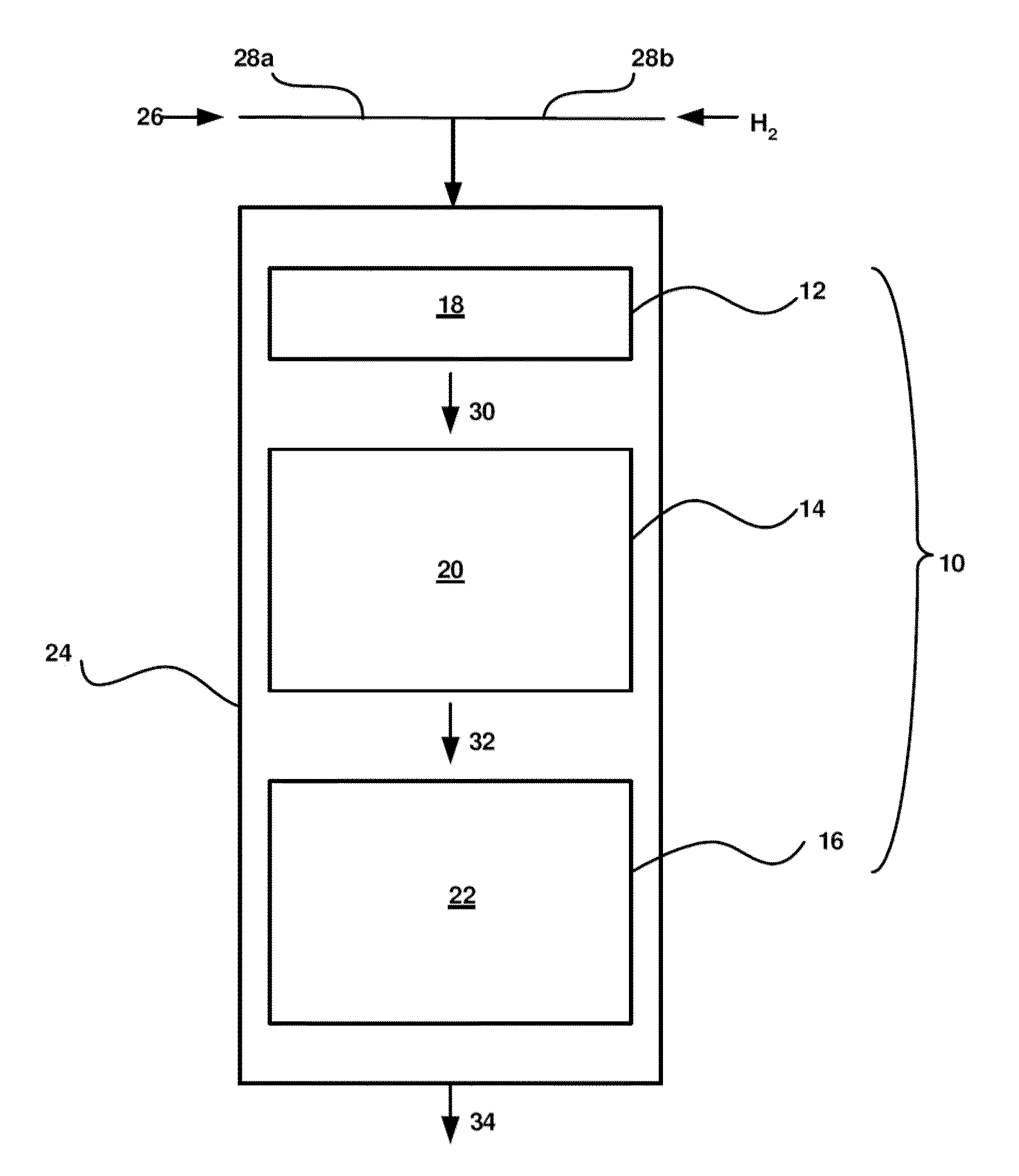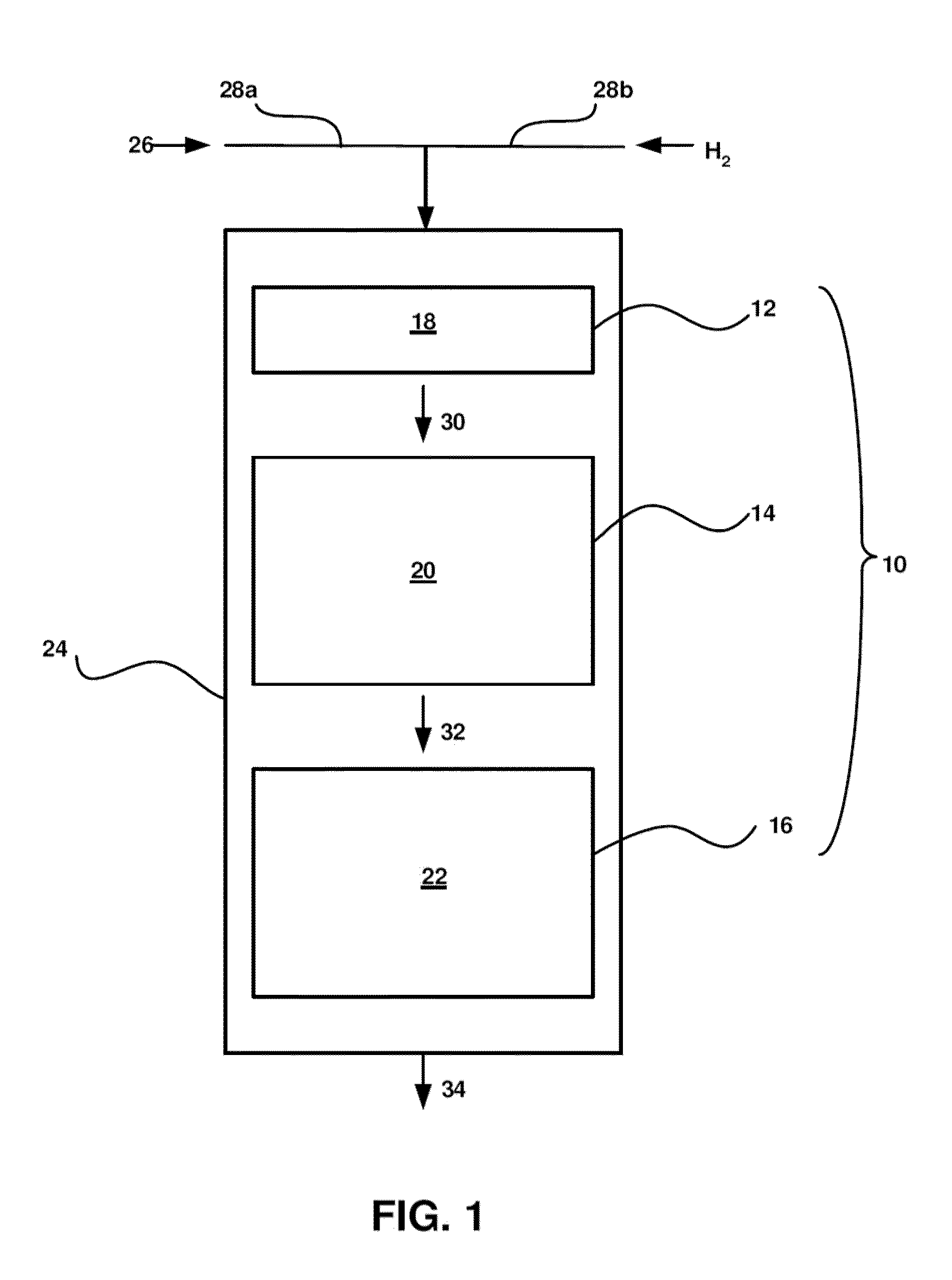Catalytic processes and systems for base oil production from heavy feedstock
- Summary
- Abstract
- Description
- Claims
- Application Information
AI Technical Summary
Benefits of technology
Problems solved by technology
Method used
Image
Examples
example 1
Preparation of Dewaxing Catalysts
Hydroisomerization catalyst A was prepared as follows. Zeolite SSZ-32 was composited with alumina to provide a mixture containing 75 wt. % zeolite, and the mixture was extruded, dried, and calcined. The dried and calcined extrudate was impregnated with a solution containing both platinum and magnesium, and the co-impregnated catalyst was then dried and calcined. The overall platinum loading was 1 wt. %, and the magnesium loading was 0.9 wt. %.
Hydroisomerization catalyst B was prepared generally as described for catalyst A, except the mixture contained 65 wt. % zeolite. The dried and calcined extrudate was co-impregnated with platinum and magnesium to give a platinum loading of 0.325 wt. % and a magnesium loading of 0.9 wt. %.
A layered hydroisomerization dewaxing catalyst system A / B was prepared by combining a layer of catalyst A with an equal volume of a layer of catalyst B, such that catalyst A was the upper layer, i.e., catalyst A was disposed upst...
example 2
Comparative Catalytic Dewaxing of Heavy Feed
The layered catalyst system A / B was compared with an equal volume of catalyst
A alone and catalyst B alone in dewaxing a waxy heavy hydrocrackate (600N) feed using a down-flow reactor under isothermal conditions. A previous generation dewaxing catalyst C(SSZ-32 loaded with 0.325 wt. % Pt and prepared without a modifier metal, e.g., Mg) was also tested (as base case) using the same feed and process conditions. The reactors for catalysts A and C contained 100% catalyst A and 100% catalyst C, respectively; the reactor for catalyst B contained 91 vol. % of catalyst B downstream from 9 vol. % guard layer; and the reactor for catalyst system A / B contained 45 vol. % of catalyst B downstream from 46 vol. % of catalyst A and 9 vol. % guard layer. The guard layer in each case comprised alumina loaded with 0.3 wt. % Pt and 0.6 wt. % Pd.
FIG. 3 shows the yield of 800° F.+ lube oil versus the cloud point obtained using the layered catalyst system A / B (ca...
PUM
| Property | Measurement | Unit |
|---|---|---|
| Temperature | aaaaa | aaaaa |
| Temperature | aaaaa | aaaaa |
| Temperature | aaaaa | aaaaa |
Abstract
Description
Claims
Application Information
 Login to View More
Login to View More - R&D
- Intellectual Property
- Life Sciences
- Materials
- Tech Scout
- Unparalleled Data Quality
- Higher Quality Content
- 60% Fewer Hallucinations
Browse by: Latest US Patents, China's latest patents, Technical Efficacy Thesaurus, Application Domain, Technology Topic, Popular Technical Reports.
© 2025 PatSnap. All rights reserved.Legal|Privacy policy|Modern Slavery Act Transparency Statement|Sitemap|About US| Contact US: help@patsnap.com



